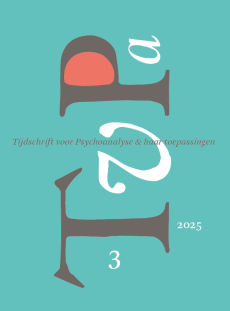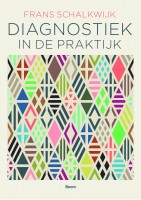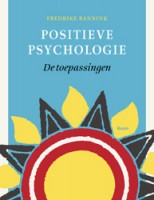De werkelijkheid van de onbewuste fantasie
Summary
Unconscious fantasy is the print-out of a scenario that has been written during the oedipal phase on the basis of the subject’s inner conviction that he or she knows how the world is composed and what role he or she plays in it. During the period in which this conviction takes shape, each child develops rapidly, both cognitively and emotionally. This conviction, which is psychic reality, offers the developing child an inner grip with which to explore outer reality. The structure of this conviction often remains unchanged throughout a lifetime and gives the subject his or her individual characteristics. Unconscious fantasy can be compared with daydreams, which must remain unconscious because consciousness implies that the daydream would become verifiable: and verifiability could bring the loss of a reality. In neurotic development a fossilization occurs because a system of convictions is tenaciously held, so that this system takes on a delusional quality. Psychoanalytic treatment offers the analysand the possibility of sharing alternative constructions of reality. In this way delusional convictions can be exposed as illusions.
Literatuur
- Arlow, J.A. (1969), Unconscious fantasy and disturbances of conscious experience. Psychoanalytic Quarterly, 38, p. 1-27.
- Boesky, D. (1983), The problem of mental representation in self and object theory. Psychoanalytic Quarterly, 52, p.564-583.
- Coultre, R. Le (1966), Splijting van het Ik als centraal neurose verschijnsel. In Engelse vertaling: Splitting of the ego, as the central phenomenon in neurosis, edited by Michael F. Chayes, (1993). International Journal of Psycho-Analysis, 74, p. 791-802.
- Eissler, K.R. (1965), Medical orthodoxy and the future of psychoanalysis. International Universities Press, New York.
- Ferenczi, S. (1933), Sprachverwirrung zwischen den Erwachsenen und dem Kind. Schriften zur Psychoanalyse, Bd.II. Fischer Verlag, Frankfurt am Main.
- Freud, S. (1919), ‘Ein Kind wird geschlagen’ (Beitrag zur Kenntnis der Entstehung sexueller Perversionen). Studienausgabe, Bd. VII. Fischer Verlag, Frankfurt am Main. In Nederlandse vertaling (1985): ‘Een kind wordt geslagen’. Nederlandse Editie: Klinische Beschouwingen 3. Boom, Meppel.
- Freud, S. (1938), Die Ichspaltung im Abwehrvorgang. Studienausgabe, Bd. III.
- Laplanche, J. & J.B. Pontalis (1973), The Language of Psycho-Analysis. The Hogarth Press, London.
- Leeuw, P.J. van der (1967), Over Freuds theorievorming. In: P.J. van der Leeuw, E.C.M. Frijling-Schreuder, P.C.Kuiper (red.): Hoofdstukken van de hedendaagse psychoanalyse. Van Loghum Slaterus, Arnhem.
- Leeuwen, W.F. van (1987), Het vanzelfzwijgende: gedachten over gevoelens. Psychoanalytisch Forum, 5 (1), p. 5-46.
- Mayes, L.C. & D.J. Cohen (1992), The development of imagination. Psychoanalytic Study of the Child, 47, p. 23-47.
- Modell, A.H. (1991), A confusion of tongues or whose reality is it? Psychoanalytic Quarterly, 60 (2), p. 227-245.
- Moran, G.S. (1987), Some functions of play and playfulness: a developmental perspective. Psychoanalytic Study of the Child, 42, p. 11-30.
- Rayner, E. (1991), The Independent Mind in British Psychoanalysis. Free Association Books, London.
- Reed, G.S. (1993), On the value of explicit reconstruction. Psychoanalytic Quarterly, 62 (1), p. 23-51.
- Renik, O. (1993), Analytic Interaction: Conceptualizing technique in light of the analyst’s irreducible subjectivity. Psychoanalytic Quarterly, 62 (4), p. 553-571.
- Spanjaard, J. (1988), Over dromen en grootheidswanen. Boom, Meppel.
- Spruiell, V. (1993), Deterministic chaos and the science of compexity: Psychoanalysis in the midst of a general scientific revolution. Journal of the American Psychoanalytic Association, 41 (1), p. 3-44.
- Sterba, R.F. (1985), Erinnerungen eines Wiener Psychoanalytikers. Fischer Verlag, Frankfurt.
- Symington, N. (1985), Phantasy effects that what it represents. International Journal of Psycho-Analysis, 66, p. 349-358.
- Treurniet, N. (1993), What is psychoanalysis now? International Journal of Psycho-Analysis, 74, p. 873-892.
- Waning, A. van (1983), Seksuele terminologie en beleving. Tijdschrift voor Psychiatrie, 25, p. 40-55.
- Winnicott, D.W. (1971), Playing and reality. Tavistock Publications, London.
- Wittgenstein, L. (1922), Tractatus Logico-Philosophicus. Routledge & Kegan Paul, London and New York.
 © 2009-2025 Uitgeverij Boom Amsterdam
© 2009-2025 Uitgeverij Boom Amsterdam
ISSN 1382-516x
De artikelen uit de (online)tijdschriften van Uitgeverij Boom zijn auteursrechtelijk beschermd. U kunt er natuurlijk uit citeren (voorzien van een bronvermelding) maar voor reproductie in welke vorm dan ook moet toestemming aan de uitgever worden gevraagd:
Behoudens de in of krachtens de Auteurswet van 1912 gestelde uitzonderingen mag niets uit deze uitgave worden verveelvoudigd, opgeslagen in een geautomatiseerd gegevensbestand, of openbaar gemaakt, in enige vorm of op enige wijze, hetzij elektronisch, mechanisch door fotokopieën, opnamen of enig andere manier, zonder voorafgaande schriftelijke toestemming van de uitgever.
Voor zover het maken van kopieën uit deze uitgave is toegestaan op grond van artikelen 16h t/m 16m Auteurswet 1912 jo. Besluit van 27 november 2002, Stb 575, dient men de daarvoor wettelijk verschuldigde vergoeding te voldoen aan de Stichting Reprorecht te Hoofddorp (postbus 3060, 2130 KB, www.reprorecht.nl) of contact op te nemen met de uitgever voor het treffen van een rechtstreekse regeling in de zin van art. 16l, vijfde lid, Auteurswet 1912.
Voor het overnemen van gedeelte(n) uit deze uitgave in bloemlezingen, readers en andere compilatiewerken (artikel 16, Auteurswet 1912) kan men zich wenden tot de Stichting PRO (Stichting Publicatie- en Reproductierechten, postbus 3060, 2130 KB Hoofddorp, www.cedar.nl/pro).
No part of this book may be reproduced in any way whatsoever without the written permission of the publisher.
Nieuwsbrief Boom Psychologie
Meld u nu aan en ontvang maandelijks de Boom Psychologie nieuwsbrief met aantrekkelijke aanbiedingen en de nieuwe uitgaven.
Aanmelden


